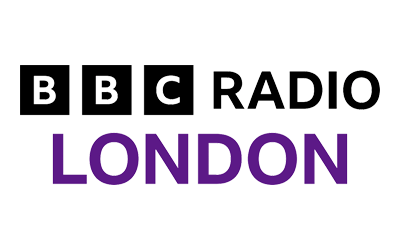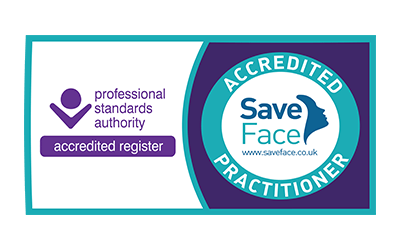An otoplasty, also known as a pinnaplasty, is a surgical procedure to improve the size, shape or position of the years. Here are some of our most frequently asked questions we get asked during an otoplasty consultation. If you’d like any more information, call 02037 335839 to speak to one of the team or arrange an ear reshaping consultation.
Quick Links
FAQs for Ear Correction Surgery (Otoplasty)
The main surgical objective during prominent ear correction surgery is to reduce the protrusion and at the same time to provide a normal configuration when the ear is viewed from the side.
This objective is achieved by modifying the flexibility of the cartilage beneath the skin, thereby creating a more desired shape and position. An incision of around 4-5 cm is made in the skin in the groove behind the ears where any remaining surface scarring will be less visible.
Occasionally, incisions are placed on the front surface of the ear, although these are placed inconspicuously within the normal contours or creases. After correction of the shape and position of the ear is accomplished, the incisions are sutured and the ears are carefully padded with cotton wool and secured with a bandage.
Providing one understands that the goal of Otoplasty is improvement and not perfection, it can be ranked as one of the more successful plastic surgery procedures. If you’ve discussed the procedure and your expectations before the operation, chances are you’ll be quite pleased with the result.
By significantly improving the appearance of prominent or misshapen ears, successful Otoplasty can also boost an individual’s personal confidence and self-esteem.
This procedure is usually performed under local anaesthesia and sedation. Following the operation, as with any type of surgery, you will notice some discomfort as the swelling and healing commences.
Prescribed painkillers will be given to you to ease any pain in the coming days. The bulky head bandage covering your ears post-surgery serves to:
- Hold the ears in their new position
- Minimise swelling and discomfort
- Enable you to sleep on either side without painful pressure
- Protect against any inadvertent injury that may occur whilst asleep.
- Encourage optimum results
Patients often say the bandage is the most unpleasant element of the experience as it is a visible sign of surgery and the urge to itch the ears can be high, however it must be kept on for one week for the reasons listed above.
If you have discussed the procedure and conveyed and agreed your expectations fully before the operation, chances are you’ll be quite pleased with the result. By significantly improving the appearance of prominent or misshapen ears, successful otoplasty can also boost personal confidence and self esteem.
If it is understood that the goal of otoplasty is improvement and not perfection, then this can be deemed one of the more successful plastic surgery procedures.
The bulky head bandage and stitches are removed after one week after which most adults can return to work. Significant bruising and swelling may take up to three weeks to subside but the improvement in the ears’ prominence will be apparent at this stage. It is advised you refrain from contact sports for three month post Otoplasty.
Find out more about the otoplasty recovery timeline.
Otoplasty is the medical term to describe “Ear Correction Surgery”. Otoplasty surgery can improve the appearance of prominent or ‘sticking out’ ears, often referred to as ‘Ear Pinning Surgery’ or ‘Ear Correction Surgery’. Otoplasty Surgery is also popular for ‘Ear Reconstruction Surgery’ to defected, deformed or absent ears.
When you return to your room following Otoplasty surgery, you will have a bandage in place around the head and ear area. This will minimize any swelling and ensure that the ears are held in their new position. Often patents report some discomfort following surgery. This is kept to a minimum with the use of regular pain relief.
All surgery carries some uncertainty and risk. When Otoplasty Surgery is performed by a qualified Plastic Surgeon, complications are infrequent and usually minor. Still, individuals vary greatly in their anatomy, their physical reactions, and their healing abilities, and the outcome is never completely predictable.
Probably the most common complication is residual irregularity in the cartilage when the ear is viewed from either frontal of side angles. It should be noted however, that both ears are never exactly alike and perfect symmetry is therefore not a reasonable expectation.
Though extremely uncommon, bleeding and infection can occur post any surgery. Precautions are taken whilst in hospital and you will be advised accordingly to keep this risk to a minimum. The final appearance of any scar is impossible to predict. You should always expect that scarring may appear red raised and lumpy in the first few months after surgery.
After this time however these usually soften and fade. In rare cases the development of permanent, hard, thick scar tissue (keloid scars) can occur. You will be assessed during your consultation with Mr Karidis in order to assess your risk.
Most people feel able to return to work once bandages and stitches are removed (at around one week post surgery). However, residual swelling may take around 2 weeks or more to subside.
A surgeon fee, anesthetist fee and hospital fee will be required. You will be given a breakdown of these costs on the day of your consultation.
In accordance with the National Healthcare commission guidelines, according to the last five years of annual audit figures submitted to the Hospital of St. John and St. Elizabeth in London, Mr. Karidis performed numerous successful Otoplasty Procedures per year.
After your operation you may feel a little drowsy from the anaesthetic and other medications. Therefore we strongly suggest that, if possible, you nominate a friend or family member to collect you. Alternatively, we can assist you in booking a taxi whilst you are in hospital.
Yes and we look forward to seeing you at the clinic around 7 and 14 days after your surgery to review your results, thoroughly clean the area and advise you accordingly. Providing all is well, you will usually see Mr. Karidis at around 6 weeks post operation for a routine check up. Further appointments can of course be made if necessary.
It is always useful to allow yourself plenty of time to recover and organise sufficient time off work. 2 weeks should give you sufficient time to allow any obvious swelling to subside. Ensure any blood tests or other tests that are required are undertaken well in advance to avoid any potential delays.
Please ensure that you notify medical staff of any excessive swelling, persistent high temperature (above 37.5 degrees for 12 hours or more) or uncontrollable pain. Most often there is nothing to be concerned about, however, it is always best to check!
The goal of Otoplasty surgery is to gain an improvement, not perfection. If you’ve discussed the procedure and your expectations before the operation, you will likely be very pleased with the result. By significantly improving the appearance of prominent or misshapen ears, an Otoplasty procedure can also boost an individual’s personal confidence and self esteem.
















